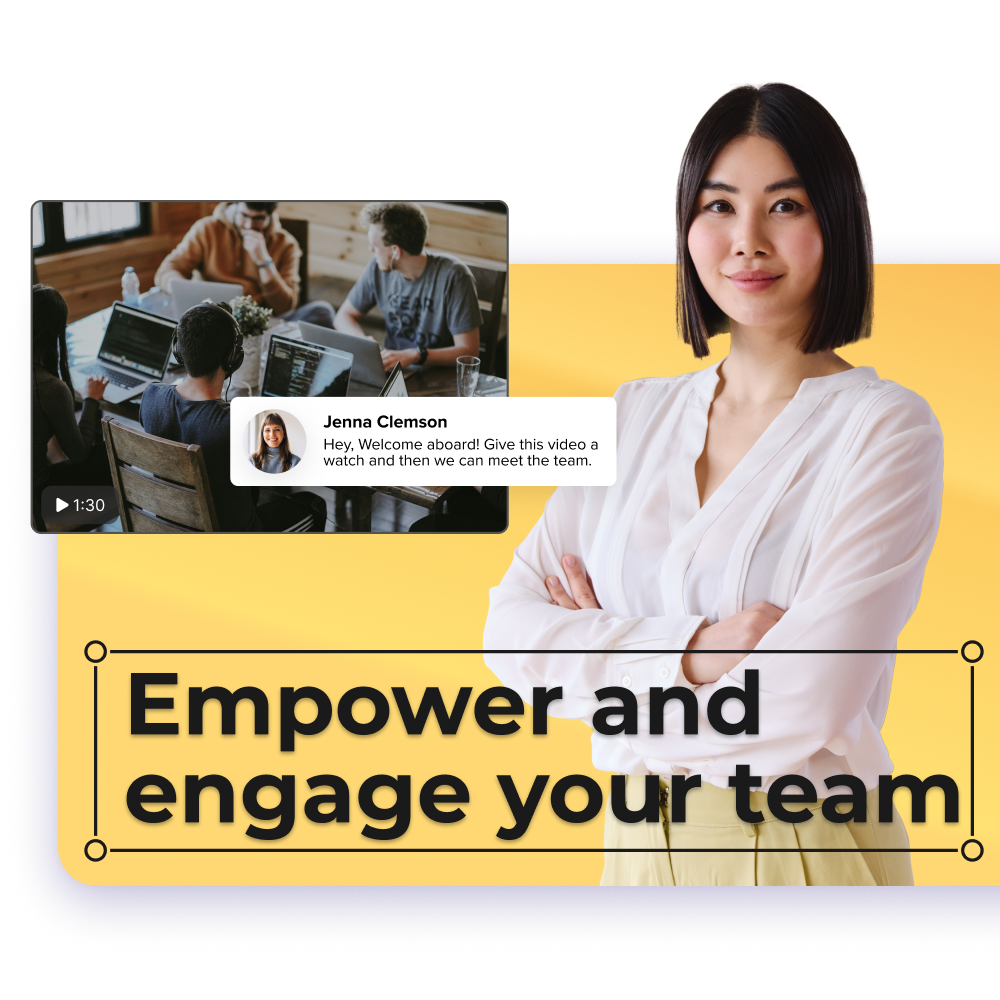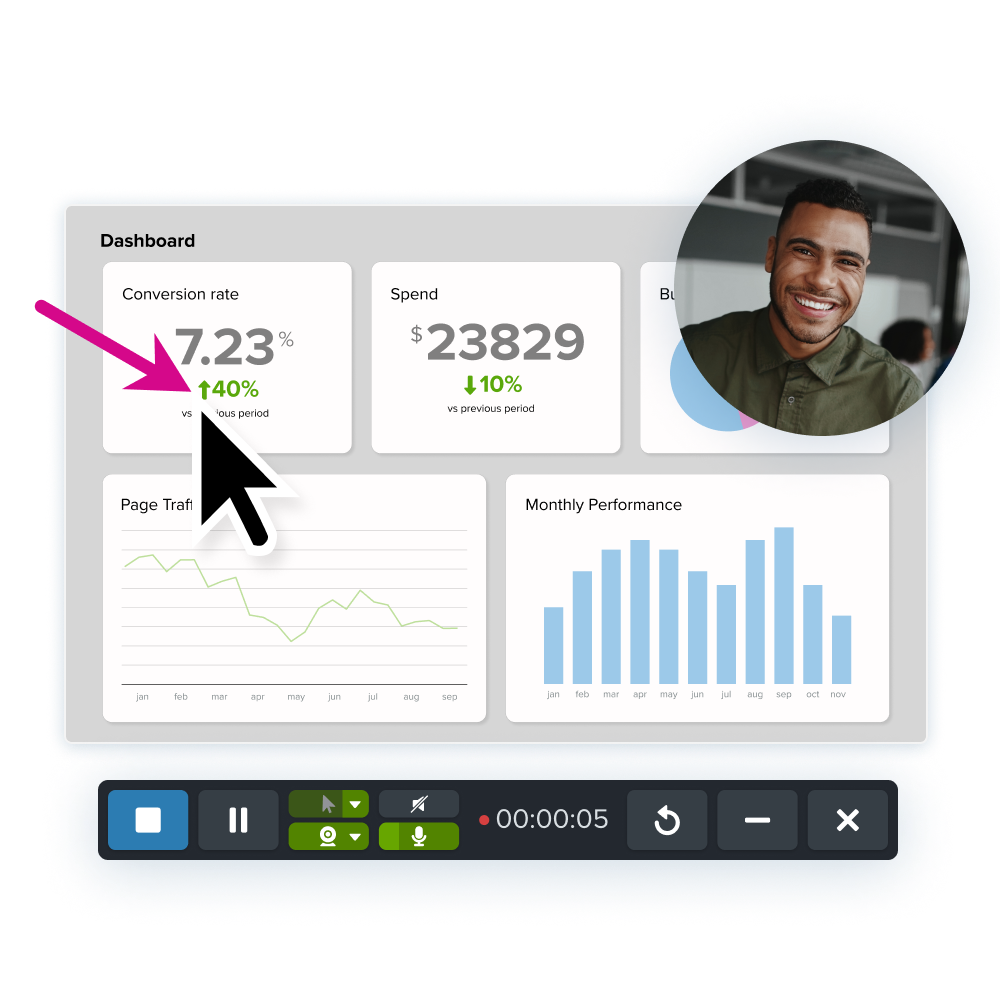Employee benefits management is an important part of any successful HR department. You need to design benefits that meet employees’ needs while also fitting the company’s budget.
Effective benefits administration—covering health, retirement, dental, and vision—helps businesses save money by simplifying processes, cutting unnecessary costs, and informing employees.
Simplify HR workflows with visual tools
Create clear, engaging training and documentation that helps your teams better understand company policies and processes.
Learn More
What is employee benefits management, and why does it matter?
Employee benefits management involves creating, implementing, and maintaining an organization’s employee benefits program. This encompasses:
- Selecting benefit plans
- Administering open enrollment
- Ensuring compliance with ever-changing regulations
- Long-term planning
- Employee education.
A traditional benefits package includes medical, dental, and vision coverage, paid time off, retirement plans, and other perks.
Benefits play a significant role in attracting and retaining top talent. A solid benefits package is a top requirement for many candidates and helps companies stay competitive.
To keep your employees, it’s important to make sure they feel valued and cared for. You can achieve this by offering the right benefits and ensuring employees understand them, leading to higher use and satisfaction.
Key components of a successful benefits program
A successful employee benefits package goes beyond basic health insurance to offer various options that meet employees’ needs.
Health, dental, and vision insurance are essential to a benefits program, but offering support for all areas of an employee’s life adds great value. Retirement accounts, such as 401(k) plans, provide employees with long-term financial security.
Paid time off, schedule flexibility, or even shorter work weeks can contribute to a healthy work-life balance. Life insurance helps employees establish a sense of security for themselves and their families. The list goes on.
Customization is important, and HR departments should tailor benefits based on employee needs when possible. Offering flexibility in enrollment options empowers employees to choose what matters most to them.
To achieve this, you have to understand what exactly your employees value and are utilizing. Having open lines of communication with employees through surveys, open-door policies, and well-established relationships coupled with regular reviews of benefit utilization data can help you keep a pulse on what employees like, what they need, and what might need to be changed.
How to simplify the benefits administration process
Managing the benefits administration process can be complex and is a common pain point for HR departments, but leveraging technology can streamline processes and improve efficiency.
Many HR software programs allow enrollments to be completed right through their benefits administration software, making this process faster for both employees and HR, less prone to human error, and simplifying the process of getting enrollment data to benefit vendors.
Screen recording and video editing tools like Camtasia can be invaluable for benefits administration, allowing HR to easily create clear, instructional videos that guide employees through the enrollment process and educational videos that help them understand their benefits and how to take advantage of them.
Utilizing video and creating engaging content is novel—especially for HR departments—and captures employees’ attention, making them a more active partner in the success of benefits programs.
Video is also an effective way to consolidate information and resources into a single, digestible place rather than having walls of text as the primary information-sharing method.
Similarly, a screen capture tool like Snagit can create visual guides for navigating benefit portals and quickly answer employee questions by showing rather than just telling.
The benefits of these tools don’t end at simplifying processes and improving the employee experience. Engaging, effective content eases the administrative burden on HR professionals by reducing the time spent answering questions or showing the same processes repetitively. This frees up time to focus on year-end tasks and strategic planning during some of the busiest times of the year, such as open enrollment.
Stop repeat questions
Create clear videos and guides with Snagit so you only have to explain tasks once.
Try it Free
Best practices for open enrollment
Effective preparation, communication, and education are critical to successful open enrollment.
Communication can begin even before benefits renewals are solidified, starting with basic information such as deadlines and what resources employees can expect to receive.
Once the renewal is complete, transparency about changes is key. It can be useful to break communication about benefits into two parts:
- A share out that focuses exclusively on what’s changing
- At least one presentation that goes over the entire benefits package
If presentations are done live, they should be recorded and then shared with employees.
The next and arguably most critical part of open enrollment is ensuring employees can easily access all the necessary resources and information.
Even if you have an internal website where all benefit information, plan documents, and other resources are housed, if it’s presented as a wall of text with little to no visual aids, it’s overwhelming and not user-friendly.
It’s also important to proactively address frequently asked questions, which will allow employees to self-serve and get answers in a timely manner, ultimately freeing up time for the HR department.
How to save money on employee benefits
Balancing cost with quality is the never-ending challenge of employee benefits management. One strategy is taking a proactive approach to understanding utilization, needs, and alternative options.
Regularly reviewing utilization will tell you what’s underutilized, what benefits have the highest cost to your organization, and where your costs and utilization are compared to the rest of the market.
As mentioned earlier, giving employees a chance to provide feedback on their benefits package is an important part of ensuring that their needs align with the company’s offerings. Underutilization could point to misalignment with what your workforce needs and wants, or maybe it simply means the plan needs to be tweaked and made more accessible, or the HR department needs to educate employees about that benefit.
Shopping the market, even if you’re not necessarily unhappy with your current offerings, is also essential. Ensuring you’ve done your due diligence makes you confident that you have the best options for both employees and the company regarding quality and cost.
Utilizing a benefits broker is also a useful strategy, as they can assist with finding creative ways to build benefits packages, negotiating rates with benefits vendors on your behalf, providing expert guidance, and more. Furthermore, their commission is paid by the insurance companies rather than the employer.
Using visual tools to educate employees
Employee education is vital to a benefits program’s success, and engaging with employees in an accessible, digestible way is key.
Utilizing communication tools like Camtasia and Snagit can make it easier for employees to consume this information. These tools can be leveraged for everything from creating simple tutorials of enrollment systems to something more robust, such as a video “manual” in which everything employees need to complete open enrollment is housed.
Using Camtasia, you can make every resource—recordings of presentations, links to benefit websites or plan documents, secondary videos that take deeper dives into benefit content, etc.—accessible directly in the video or through a clickable hotspot.
Employees can use a video such as this as their guide while completing open enrollment, walking them through each step and allowing them to choose what content they need through the video’s table of contents.
When employees know that everything they need to make informed decisions can be found in a simple video that walks them through the enrollment process from beginning to end, they’re more likely to consume that content and feel confident in their decisions.
It’s also important to note that benefits education should be ongoing and not limited to open enrollment season. The more benefits are discussed and the more effort put into demystifying them, the more likely employees will utilize them.
Using Camtasia and Snagit, you can make an educational content series to highlight certain benefits, explore more complicated benefit topics in greater depth, and answer questions you get from employees throughout the year, so benefits are always at the top of your mind. Investing time into employee education improves their experience and shows a commitment to their well-being.
Video messages > meetings
Record your screen and camera with Snagit for quick updates and feedback.
Learn More
Transform your benefits program today
Mastering employee benefits management requires strategic planning, ongoing education, and visual communication tools to streamline the administration process. All these factors ensure that you’re balancing the quality and financial needs of employees and the company, all while keeping employee well-being and education at the forefront.
Start leveraging technologies like Snagit and Camtasia to create a more effective and engaging benefits program, so your HR department can make benefits management more efficient and user-friendly.



Share